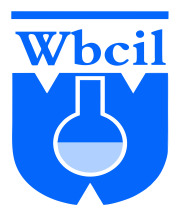The Science Behind Ferric Maltol and Its Health Benefits

Ferric Maltol
Ferric maltol is an innovative oral iron therapy composed of a stable complex of ferric (Fe3+) iron and maltol (3-hydroxy-2-methyl-4-pyrone), a naturally occurring sugar derivative found in fruits and roasted barley. The complex is formed with a 3:1 iron-to-maltol ratio, which prevents the formation of iron hydroxide polymers, ensuring bioavailable iron at the neutral pH of the intestinal tract.
Chemical Composition and PropertiesThis iron API is characterized by its unique chemical structure, which consists of a ferric iron (Fe3+) ion complexed with maltol, a natural organic compound derived from the decomposition of starch. The chemical formula for ferric maltol is C18H15FeO9, and its molecular weight is approximately 431.154 g·mol. [1,2,3]
Development and Evolution of Ferric MaltolThe development of ferric maltol as a pharmaceutical compound involved a series of key milestones:
By the mid-20th century, scientists successfully synthesized ferric maltol, combining ferric iron (Fe3+) with maltol. This combination was found to enhance the solubility and stability of ferric iron, addressing the absorption challenges associated with traditional iron supplements.
Preclinical Studies: Early preclinical studies demonstrated the potential of ferric maltol in improving iron absorption. Animal models showed promising results, with higher bioavailability and reduced gastrointestinal irritation compared to ferrous iron supplements.
Clinical Trials: The positive preclinical results led to clinical trials in humans. These trials aimed to evaluate the safety, efficacy, and tolerability of ferric maltol in treating iron deficiency anemia. The outcomes were encouraging; showing that it effectively increased hemoglobin levels and replenished iron stores with fewer side effects.
Regulatory Approval and Current Status
Europe involved a key regulatory milestone. In February 2016, the European Medicines Agency (EMA) granted marketing authorization for Feraccru, a medication containing ferric maltol. Ferric maltol has navigated a successful path through regulatory hurdles to become a recognized treatment for iron deficiency in adults.Following pre-clinical development, ferric maltol first achieved marketing authorization in the European Union in 2017. Shortly after, in October 2018, developers submitted a New Drug Application (NDA) to the US Food and Drug Administration (FDA) for approval.The FDA assigned a target review date in December 2018, and by July 2019, ferric maltol received the green light for use in the United States. These milestones represent the key steps ferric maltol took to gain acceptance as a legitimate treatment option. [6,12,13]
Market Introduction Following regulatory approval, it was introduced to the market as a prescription medication. Its unique properties, including enhanced absorption and reduced gastrointestinal side effects, positioned it as a valuable alternative to traditional iron supplements.
Current Applications of Ferric MaltolToday, this API is widely used to treat iron deficiency anemia, particularly in patients who cannot tolerate other forms of iron supplementation. It is especially beneficial for individuals with chronic conditions such as inflammatory bowel disease (IBD) and chronic kidney disease (CKD), where iron deficiency is common, and traditional iron supplements are often poorly tolerated. [4,5]
Solubility and BioavailabilityFerric Maltol exhibits favorable solubility in aqueous and slightly acidic environments, making it highly effective for oral administration. This solubility is crucial as it ensures that the compound remains stable and dissolves readily in the gastrointestinal tract, facilitating the release of ferric ions. The maltol component acts as a chelator, binding to the ferric ions and enhancing their solubility, which is a significant advantage over traditional iron salts that often suffer from poor solubility and stability issues. It involves evaluating how efficiently these iron formulations are absorbed and utilized by the body.
It is known for its high bioavailability. It stands out among oral iron supplements due to its high bioavailability and lower incidence of gastrointestinal side effects, making it a more tolerable option for many patients. [7]
In contrast, traditional iron salts like ferrous sulfate, ferrous gluconate, and ferrous fumarate, while effective, are often associated with significant gastrointestinal discomfort.Intravenous iron formulations such as iron sucrose and ferric carboxymaltose offer the highest bioavailability but come with the need for medical supervision and potential risks associated with intravenous therapy.
This iron API enhances the solubility and absorption of iron in the gastrointestinal tract. It has been shown to be effective in increasing hemoglobin levels in patients with iron deficiency anemia, with fewer gastrointestinal side effects compared to traditional iron salts.

Recently Visited
Position your company at the heart of the global Pharma industry with a CPHI Online membership
-
Your products and solutions visible to thousands of visitors within the largest Pharma marketplace
-
Generate high-quality, engaged leads for your business, all year round
-
Promote your business as the industry’s thought-leader by hosting your reports, brochures and videos within your profile
-
Your company’s profile boosted at all participating CPHI events
-
An easy-to-use platform with a detailed dashboard showing your leads and performance